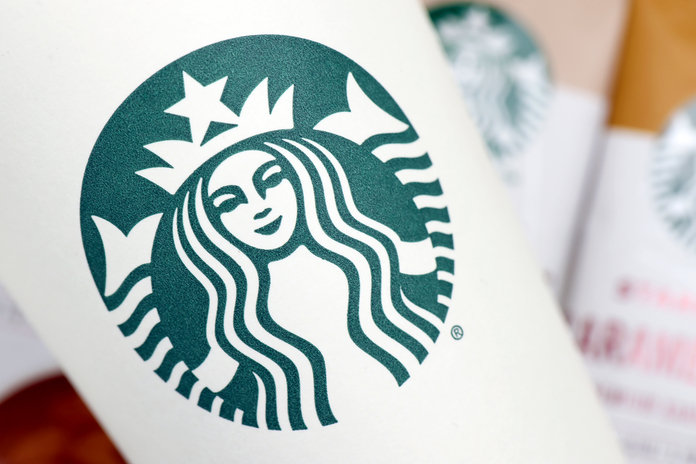Microsoft (MSFT) and Google (GOOG) (GOOGL) announced consistent revenue growth and margins that were unaltered from previous economic conditions last week, which was a strong start for Big Tech results. Since many businesses have struggled with operational margins and cash flow, good margins were especially welcome.
Microsoft, meanwhile, reported a free cash flow of $17.8 billion, net profits of $16.7 billion, and optimistic annual projections. Like Apple, Google recently revealed a significant free cash flow of $12.6 billion and net earnings of $16 billion.
However, Meta (META), which mostly faltered on its Q3 guide, could not say the same. Due to currency headwinds, the company posted its first sales decrease in company history and missed its forecast for the upcoming quarter.
Analysts predicted the third quarter’s $30.4 billion, or 5% growth. Instead, the business forecasted revenue of $26 billion to $28.5 billion, representing a YoY fall of 6% at the midpoint of the projection with a 6% headwind from the current exchange rates.
Alphabet: Resilient Search
For a total of $69.7 billion, the corporation claimed sales growth of 13% or 16% in constant currency. A success was that the operating margin remained constant from year to year. Despite a 24% increase in operating costs, the operating margin of $19.58 billion in operating profits, or 28%, remained consistent with previous quarters.
At $16 billion, the 2021 net margin was slightly lower than in prior quarters but still comparable to the 2020 quarter. The business generates $12.6 billion in free cash flow. The corporation has marketable securities and $125 billion in cash. In comparison to $1.36 during the same quarter last year, the company produced an EPS of $1.21.
Given the current environment, Search was stable with 13.5% growth to $40 billion, which gave comfort that not all ad expenditure has been paused. The total monetary amount of Search was steady sequentially but grew by 24% last quarter to $40 billion.
Regarding Search’s resilience in the current environment, the effects of Google’s sizable R&D division and technological advancements in A.I. cannot be exaggerated. We are only beginning to see the extent of Google’s future dominance in the advertising market.
Although it was anticipated that YouTube would affect the report, it contributed a small amount of increase, at 5% year over year. The business has maintained that YouTube growth is low due to problematic comparisons.
Difficult comparisons were often brought up, like in this quote: “the modest year-on-year growth rate primarily reflects lapping the uniquely strong performance in the second quarter of 2021.”
Notably, growth in Google Cloud dropped to 35.6% from 43.8% in the previous quarter. In other words, despite having a smaller revenue base, Google Cloud is growing less quickly than Azure. Future monitoring is necessary for this.
Double-Digit Guide for FY2023 from Microsoft
While many tech businesses are reluctant to issue guidance, Microsoft’s management did so for both the first quarter of FY2023 and for FY2023. Management offered expectations for the fiscal year 2023, which ends in June, as well as a 10% guide across product lines for the upcoming quarter:
“We continue to expect double-digit revenue and operating income growth in both constant currency and U.S. dollars. Revenue growth will be driven by continued momentum in our commercial business and a focus on share gains across our portfolio.”
Wall Street analysts’ expectations were missed by 0.94% as revenue increased by 12% YoY to $51.9 billion, while EPS came in at $2.23. (missed estimates by 2.9% ). The strong U.S. currency reduced earnings per share by $0.04 and revenue by $595 million. Revenue from Microsoft Cloud increased by 28% YoY to $25 billion.
The company’s performance is respectable in light of the many macro uncertainties, China’s lockdowns, and the strong U.S. dollar. Revenue for FY2022 increased by 18% YoY to $198.3 billion, and net income rose by 19% YoY to $72.7 billion.
Gross profits for the corporation rose by 10% year over year to $35.4 billion. When compared to 69.7% during the same period the previous year, the gross margin was 68.3%. The gross margin remained almost constant after accounting estimate changes were considered.
To $20.5 billion, operating income improved by 8% year over year. Compared to 41.4% during the same period last year, the operating margin was 39.6% this time. The operating margin would remain unchanged if the adjustment’s effects in the accounting estimate and F.X. were excluded.
The most recent quarter saw a continuation of the company’s robust cash flows. Free cash flow climbed by 9% YoY to $17.8 billion, while cash from operations expanded by 8% YoY to $24.6 billion (or 47% of revenue) (34% of revenue). Debt is $49.8 billion, and the corporation has $104.8 billion in cash and investments.
P.C. sales are down, but the company’s other business divisions are still expanding. The Productivity and Business Processes category increased by 13% YoY to $16.6 billion, while Intelligent Cloud increased by 20% YoY to $20.9 billion.
The corporation extended the valuable life of server and network equipment assets from four to six years through an accounting change, which will increase the depreciation costs for the business.
During the earnings call, Amy Hood stated:
“First, effective at the start of F.Y. ’23, we are extending the depreciable useful life for server and network equipment assets in our cloud infrastructure from 4 to 6 years, which will apply to the asset balances on our balance sheet as of June 30, 2022, as well as future asset purchases.”
“As a result, based on the outstanding balances as of June 30, we expect fiscal year ’23 operating income to be favorably impacted by approximately $3.7 billion for the full fiscal year and approximately $1.1 billion in the first quarter.”
Meta: Q3 expectations not met
Given the multiple challenges that tech businesses face, the market does not require a flawless quarter for Q2. The market needs evidence that a business may have reached a bottom and can lead to growth from Q2 to Q3, even if it is modes.
For the first time, Meta’s revenue fell in the second quarter. That was anticipated. On the other hand, the lower guide for the upcoming quarter was unexpected. At the midpoint of the range, the business projected $26 billion to $28.5 billion, or a YoY fall of 6%.
The forecast accounts for the company’s lackluster advertising demand and the 6% foreign exchange headwinds in the recent quarter. Investors anticipated that growth would resume in the upcoming quarter.
DAUs for the company was somewhat more than predicted, at 1.97 billion as opposed to 1.96 billion. The 2.93 billion monthly users somewhat underperformed the 2.94 billion projections.
To $20.4 billion, operating expenses increased by 22% yearly. Due to this, the operating margin decreased from 43% in the prior quarter to just 29% in the most recent quarter. It also contributed to the net income falling 36% YoY to $6.69 billion. As opposed to $3.61 in Q2 2021, the EPS was $2.46 this quarter.
From the prior forecast of $90 billion to $95 billion and the last quarter’s prediction of $87 billion to $92 million, the company is aiming to further cut operating expenses for the year to $85 billion to $88 billion.
In-depth webinar here where we covered why Meta will likely continue to experience challenges.
Apple: Despite obstacles, strong results
Despite the problematic macroeconomic backdrop, a strong U.S. dollar, and supply chain challenges, Apple (AAPL) reported good results. Revenue increased by 1.9% YoY to $83 billion, matching experts’ projections. It announced EPS of $1.20, exceeding expectations by $0.04 (4% beat).
Revenue for the product segment fell by 0.9% YoY to $63.4 billion, while revenue for the services segment increased by 12% YoY to $19.6 billion. The number of installed active devices for the company increased to an all-time high. More than 860 million people had paid subscriptions, an increase of 160 million over the previous year.
For the upcoming quarter, the corporation did not provide precise revenue guidance. The company’s CEO, Tim Cook, stated on the earnings call that revenues would increase in the September quarter compared to the June quarter while decreasing on the services side.
The gross margin for the business was 43.26%, down from 43.75% in the previous quarter and 43.29% in the same time last year. It exceeded the management’s forecast of 42 to 43%.
In comparison to $21.7 billion or $1.30 per share during the same time last year, net income was $19.4 billion, or $1.20 per share. It exceeded analysts’ projected EPS by $0.04
Debt was $120 billion, and the corporation had $179 billion in cash and marketable securities. The corporation recorded strong operating cash flows of $23 billion (28% of revenue). In the most recent quarter, the corporation paid its stockholders approximately $28 billion in dividends and share repurchases.
Featured Image: Megapixl © Anyaberkut















